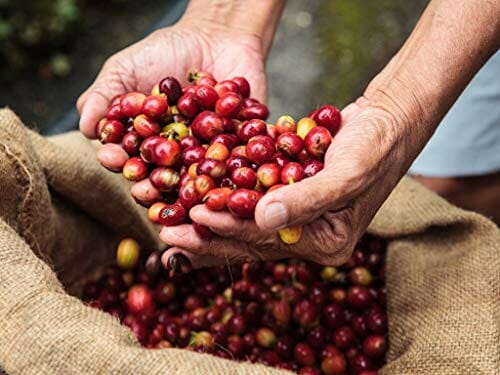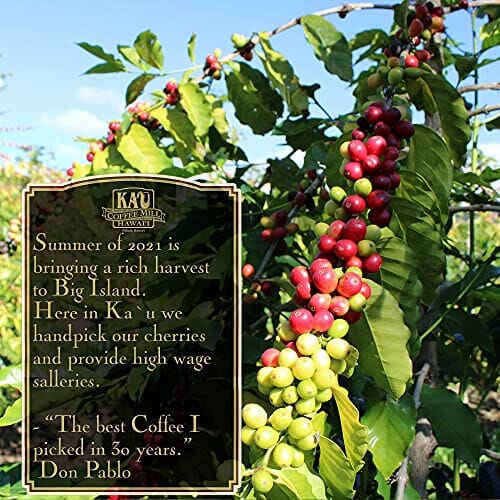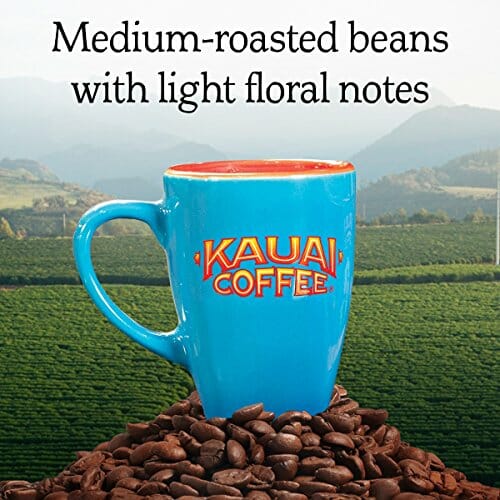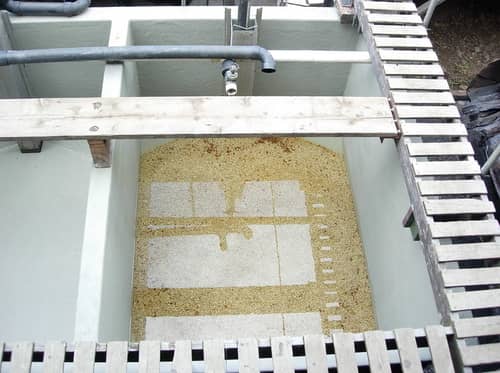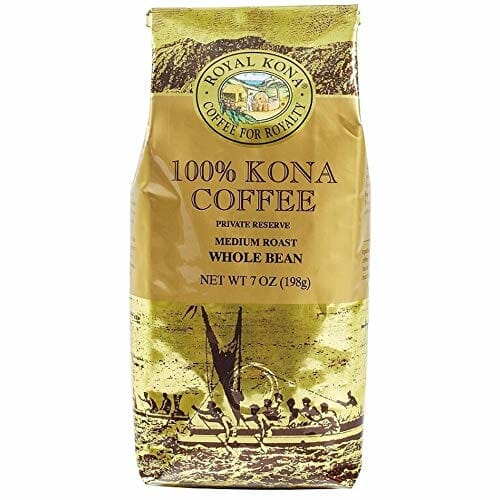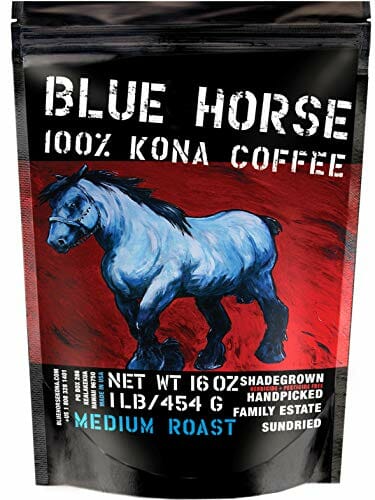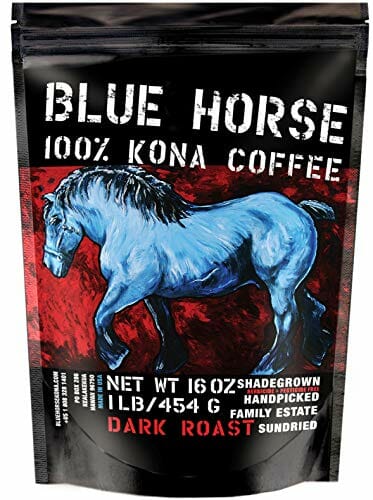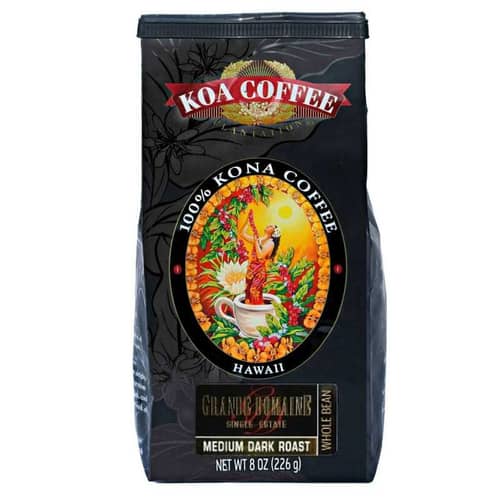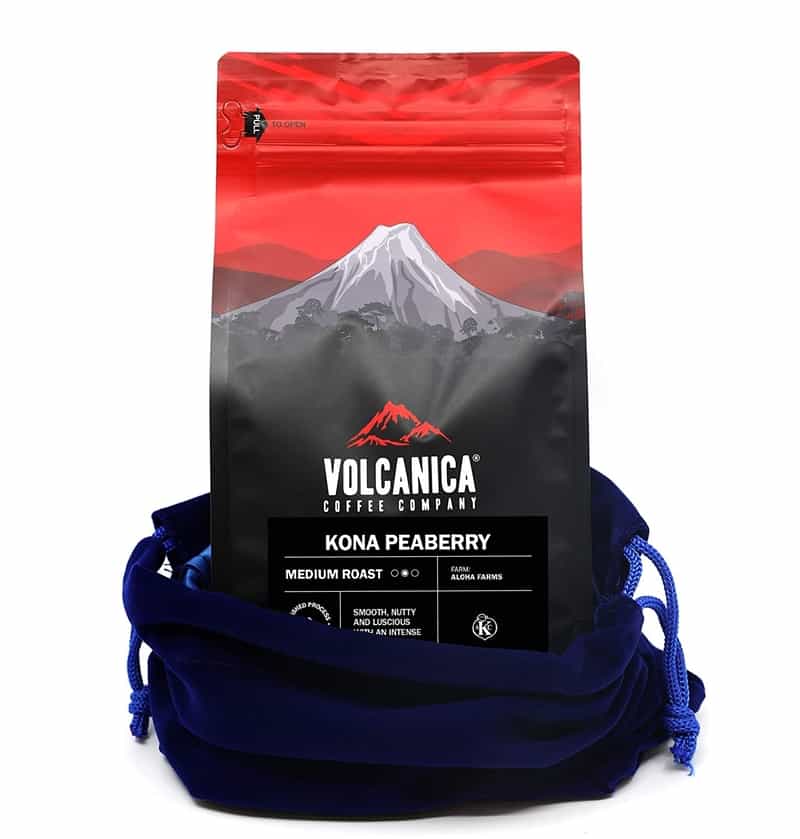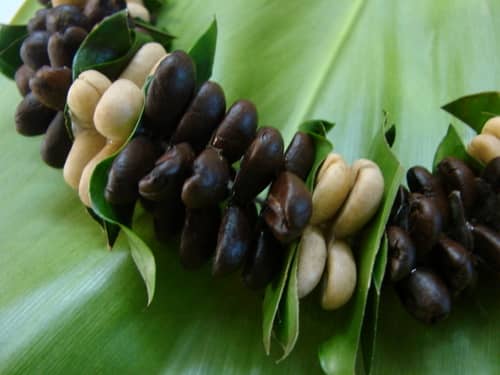According to the National Coffee Association USA [NCA] (1), it’s reported in 2020 that 7 in 10 Americans drink coffee every week, among whom 62% have a daily coffee routine.
Despite how much coffee Americans consume, did you know that only two states, Hawaii and California, produce coffee beans (2)?
But, coffee beans grown in California are merely part of a side experimental project and only Hawaii widely produces them commercially.
In this article, I will introduce you to Hawaiian coffee, especially the world-renowned Kona coffee beans, what makes them so good, and the best Hawaiian coffee brands you can find for an authentic and pleasant experience.
What Type Of Coffee Is Produced In Hawaii?
What coffee is Hawaii known for?
When speaking of Hawaiian coffee, most will automatically think of Kona coffee as it’s the most popular and widely produced type of bean in the state.
But there is more than one island in Hawaii and definitely more than one coffee farm, so there is certainly more than just one variety of coffee grown here.
Other than Kona, I will also introduce some of the other coffee that’s also growing in popularity.
Kona Coffee Beans
Kona coffee is the market name for Arabica coffee beans produced in the Kona district of the Big Island of Hawaii.
Specifically, they’re grown on the slopes of the Hualalai and Mauna Loa volcanoes. This area is now often referred to as the Kona “coffee belt”.
Kona coffee beans have gained quite a reputation and are considered one of the most expensive coffee in the world due to their rarity and unique and premium aroma and flavor profile.
Ka’u Coffee Beans
And as you can tell by how Kona coffee beans were named, the following beans are named after their production origins as well.
Ka’u coffee is grown next door to the popular Kona coffee belt, on the southern slope of the Mauna Loa volcano.
So, is Ka’u coffee the same as Kona coffee? No, only coffee produced in the Kona coffee belt under similar growing conditions can be called authentic Kona coffee.
But the former is often referred to as the rising cousin of Kona and becoming more widely recognized for its low acidity, silky smooth body, and intense flavors with interesting hints of citrus flowers.
Puna Coffee Beans
Puna is one of the newest emerging coffee regions in the Big Island of Hawaii.
According to the Hawaii Coffee Association [HCA], the coffee is grown on the opposite side of the island from Kona coffee and benefits from the very generous rainfall and predominantly lava rock-based land.
Although the production scale is still limited to scattering small farms, it’s slowly gaining coffee drinkers’ interest for its full-bodied and aromatic brew.
Hamakua Coffee Beans
Hamakua coffee is another up-and-coming small production region in Hawaii.
The coffee farms are located on the northern slopes of the Mauna Loa where they can take advantage of the cool climate, high rainfall, and nutrient-rich red soil.
Compared to other Hawaiian coffees, Hamakua‘s is richer with a chocolaty aftertaste.
Kauai Coffee Beans
This is in fact one of the largest coffee-growing regions in the state, having dished out more than half of the coffee output in Hawaii at times.
What’s more, the first-ever large-scale planting actually took place in Kauai as well.
It had so much potential to make it big, before Kona stole the spotlight, of course.
So if you have a chance, do give these second-lead Kauai beans a try for their mild acidity and clean taste.
What Is So Special About Kona Coffee?
Since Kona coffee is the most predominant type in Hawaii, we’ll mainly discuss these beans going forward.
Some even go as far as saying that Kona coffee is the best in the world. So what exactly makes these beans so good and worth the high price point?
Soil
As I’ve mentioned above, Kona coffee is grown on the slopes of 2 volcanoes of the Big Island.
According to the Food and Agriculture Organization of the United Nations [FAO], rich volcanic soil covers less than 1% of the land surface.
And yet it does magic to the coffee trees:
- The nutrients and minerals in the land help grow richer coffee plants
- The fluffy and light soil structure allows for better air ventilation and drainage
Climate
And growing coffee plants on the slopes of volcanoes in Hawaii, specifically, means they can benefit from all kinds of environmental advantages, especially:
- A humid climate with frequent showers on high altitudes
- Generous shades from tropical clouds
Processing
The secrets to getting these premium Kona beans aren’t limited to the impact of the surrounding nature but they’re thanks to the efforts of local farmers as well.
Here’s how Kona beans are typically processed at Hawaiian coffee farms:
- Ripened coffee cherries are hand-picked and collected.
- They go through a washed process to be converted into parchment.
- They’re dried in the open then in a mechanical dryer until the moisture drops down to 9 – 12%.
- The parchment goes through the dry milling process which includes hulling, polishing, and classifying, to turn into the green bean.
- The green beans are sorted one more time on the gravity table and only the strong top-grade Kona beans survive.
Quality
And once they’re roasted, ground, and brewed, you can enjoy a cup of Kona coffee that’s premium in every way.
If you brew it right, expect to taste the rich coffee with brown sugar and chocolate undertone, sweet honey notes, and hints of bright fruity flavors.
Overall, Kona coffee is very easy to drink due to its medium and smooth body and clean taste.
The Best Hawaiian Coffee Brands – Our Comparison
| Coffee Beans | Product | Features | Price |
|---|---|---|---|
Editor's Choice  |
| CHECK PRICE | |
 | Hawaii Coffee Company – Royal Kona Coffee 100% Kona Private Reserve |
| CHECK PRICE |
 |
| CHECK PRICE | |
 |
| CHECK PRICE | |
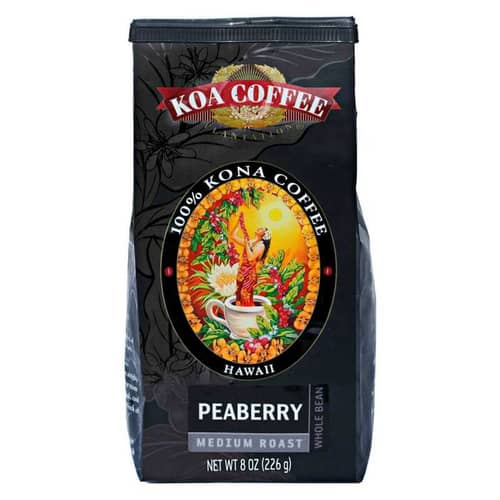 |
| CHECK PRICE | |
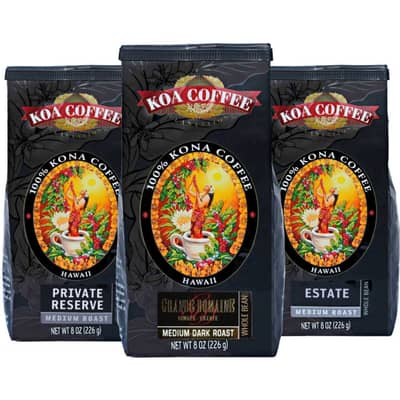 | Koa Coffee - Medium Roast Kona Coffee Tri-Pack - Grande Domaine Kona Coffee | Smooth and balanced with very mild acidity and a distinct bittersweet taste. | CHECK PRICE |
 | Koa Coffee - Medium Roast Kona Coffee Tri-Pack - Private Reserve Kona Coffee |
| CHECK PRICE |
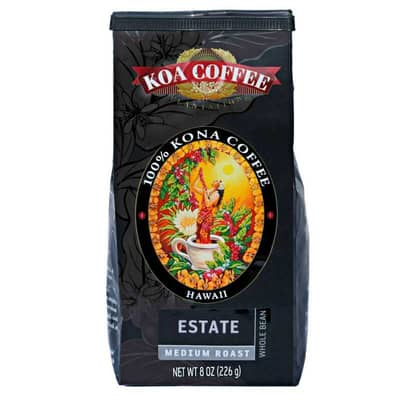 | Koa Coffee - Medium Roast Kona Coffee Tri-Pack - Estate Kona |
| CHECK PRICE |
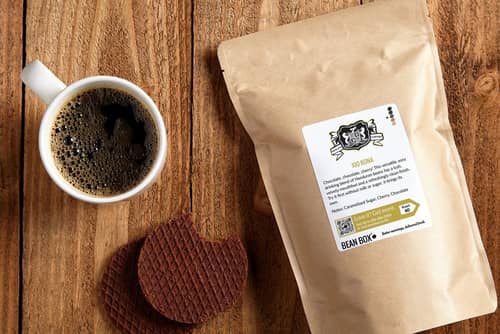 | Keala's Hawaiian Coffee - 100% Kona Extra Fancy Medium Coffee |
| CHECK PRICE |
Now that you’re aware of the appeal of Kona coffee, take this advice from the Coffee Geek and check out the following 7 best Kona coffee brands in the market.
Based on my expertise and your personal preference, let’s pick out a bag of Kona beans for you to start immersing yourself in the colorful and unique Kona coffee taste.
Volcanica Coffee – Kona Peaberry Coffee
Volcanica Coffee is definitely no stranger to Kona coffee as this family-owned specialty coffee roaster specializes in distributing coffee grown in volcanic regions all around the world, including Hawaii.
Peaberry coffee is a natural mutation in coffee beans that causes them to carry only one big bean rather than 2 separate regular ones. They’re usually sorted and separated during processing by size and/or weight.
It’s popularly believed that peaberry coffee has better overall quality, taste, and aroma due to the mutation.
Read more about Peaberry Coffee here.
Though that’s up to debate since most of the peaberry beans are cultivated and processed in better conditions, generally, one can find peaberries particularly more interesting than the regular old Joe.
What’s more, the mutations only happen to 5-10% of the entire harvest, so part of their charm is the rarity as demands often exceed supply.
And that applies to the whole bean Kona Peaberry coffee that Volcanica Coffee offers as well.
This peaberry-grade 100% single-origin pure Kona coffee is sourced from the Aloha Farms, which is registered with the USDA and Hawaii Department of Agriculture to supply fresh, high-quality, and traceable products.
And with great brewing skills, you can bring out great flavors and aromas that match expectations.
This medium roast is lusciously smooth with a medium body and nutty undertone. Despite the low acidity, you’ll still find the taste and aroma very complex and intense.
Hawaii Coffee Company – Royal Kona Coffee 100% Kona Private Reserve
Hawaii Coffee Company is a very well-established brand in Hawaii as the parent company of many popular Hawaiian brands distributing high-quality coffee and tea.
And on this lineup today we see the appearance of its Royal Kona Coffee brand, the largest roaster of these exquisite beans.
Royal Kona has coffee as rich as its history dating back to 1968 when the world still had no idea that Kona coffee was a thing.
And one of its visions was to help Kona coffee gain international recognition so that the farmers can see their products being enjoyed by coffee lovers all over the world.
And this OG Kona coffee brand has made it. Today, you can give the medium roast Kona private reserve 100% Kona coffee of Royal Kona a try.
These pure Kona beans are grown and milled right in the Kona region and only the best of the best among them are selected to be packaged and sent to you to make a gourmet cup of Joe.
The medium roast profile gives you a full-bodied brew that still preserves many bright and fruity flavor compounds.
So if you’re a fan of the medium-light roast, this is a great option to start exploring a new type of coffee.
You can grind this fresh whole bean Kona coffee from Royal Kona and go the typical route of brewing a cup of French Press or drip coffee with them.
But the brighter flavor profiles here are better complemented by the clean and smooth Pour-Over brewing methods such as Hario V60 or Chemex.
Blue Horse Coffee – 100% Kona Coffee Medium Roast
You can’t list popular Kona coffee brands without mentioning Blue Horse Coffee.
The flavors of its Kona beans are as dark and vibrant as its packaging which features an illustration of an aggressive blue horse against a red and black heavy background.
Similar to Volcanica Coffee’s, Blue Horse also went and got its single-origin family estate Kona beans inspected and certified by the government to assure buyers of their authenticity.
And like many other Kona coffee brands featured in this article, Blue Horse Kona coffee is also cultivated in a clean environment that’s herbicide- and pesticide-free, carefully hand-picked and sundried before getting medium-roasted.
The result is a batch of pure Kona coffee that’s dark with a bit of oil, so a bit darker than your average medium profile.
You can immerse yourself in a gourmet coffee experience with its soothing and buttery body, vibrant aroma, rich flavor, bittersweet chocolaty undertone, and exquisite notes of caramel and hints of spices.
Blue Horse Coffee – 100% Kona Coffee Dark Roast
Other than the medium roasts, Blue Horse Coffee also offers another Kona beans option in dark roast for those looking for something even deeper and darker.
If you have a sensitive stomach or worry about your caffeine intake, definitely go with this dark roast as it has a muted acidity and much lower caffeine content than lighter roasts, contrary to popular beliefs.
You can pretty much expect the same flavor profiles as the medium roast, but these Kona beans are a bit oilier, fuller-bodied, and less vibrant.
You can use them with brewing methods that utilize paper filters to get a clean and smooth brew.
But if you think the coffee oils add more dimension to the coffee flavor, no one is stopping you :)
Koa Coffee – Peaberry Medium Roast 100% Kona Coffee
Here’s another medium roast peaberry Kona coffee beans option from the brand Koa Coffee.
This is one of the brands that have helped bring Kona coffee to its international stardom.
Established in the late 1990s, it’s been featured on Forbes multiple times for multiple titles such as “Top 10 Coffees of the World”, “50 of America’s Best” and “Best Coffee in America”.
The peaberry Kona beans supplied by Koa Coffee are also handpicked, neatly processed, and freshly roasted to order and packaged by hand to ensure the best Kona coffee reaches the doors of consumers.
This peaberry Kona, often referred to as the “champagne of Kona coffees”, is loved by coffee connoisseurs for its smoothness and full body with little acidity and very few to none bitter compounds.
You can enjoy it on its own or add a bit of cream and sugar for those who prefer a sweet taste in coffee.
You can give these medium-roasted real Kona coffee beans a try. And if you click, why not take up the brand’s My daily Aloha Coffee Subscription offer to save some money while regularly enjoying the supreme taste of Hawaiian Kona coffee?
Koa Coffee – Medium Roast Kona Coffee Tri-Pack
If you’re impressed with what Koa Coffee company has achieved, why not give all of its best of the best Kona beans a try?
The brand heard your demand and offered a Tri-pack comprising 3 of its award-winning Kona coffees in moderate sample sizes (8 oz/227 g or 1 lb/454 g).
Grande Domaine Kona Coffee
The Grande Domaine has successfully won the Kona Coffee Cupping Contest for its remarkable quality and balanced flavor.
They’re actually Kona blends, but not with other types of coffee. They, in fact, mix both the regular flavorful Kona coffees with the supremely rare peaberry Kona.
These Kona blends are then roasted to a perfect Vienna profile, which is closer to the medium-dark roast spectrum.
So you can expect a rich and buttery brew typical of a dark roast but none of the smokiness and unwanted burnt flavors and aromas.
Have a straight black with your Pour-Overs, or drip machine to taste the nutty undertone before overshadowing the medium-dark coffee with creams and sugars.
Private Reserve Kona Coffee
The second sample in the bunch is the Private Reserve, the winning coffee brand that Forbes called the “Best in America”.
This is a proprietary Kona blend containing 100% of the best Kona coffee beans exclusive to Koa Coffee.
Its secret combo is medium-roasted to perfection to best show off coffee’s smoothness and flavor balance with very mild acidity and a distinct bittersweet taste.
Estate Kona
And, last but not least, it’s Koa’s Estate Kona, featuring the classic taste of Aloha.
If you’re a fan of single-origin coffee due to its consistency in size, body, taste, aroma, and overall quality, you’ll love to try some estate coffee.
Kona coffee here comes from the same coffee farms in high altitudes on the slopes of the Mauna Loa volcano, rather than getting mixed up with other Kona coffee farms.
This gives it even better bean uniformity to produce a more consistent quality brew.
Overall, this Kona coffee blend is very well-balanced, deep, and satisfyingly smooth to draw you back for more.
Keala’s Hawaiian Coffee – 100% Kona Extra Fancy Medium Coffee
Here’s another medium-roast true Kona coffee option with a balanced flavor from the brand Keala’s Hawaiian Coffee to get you to start exploring the richness of the local Arabica beans.
The Kona Extra Fancy beans sourced directly from the island are Bean Box’s rarest and best-selling coffees ever.
The extra fancy grade is proven by both the coffee’s outer appearance and inner beauty.
The medium profile falls more on the medium-dark roast range, giving the beans a bit of a shiny surface due to the visible oils escaping.
Nevertheless, it’s extra fancy so you can rest assured that none of the unpleasant features will be present in this coffee.
Kona beans will still be extremely smooth and groovy once brewed, coupled with a medium body and noticeable hints of toasted coconut and passion fruit in both the flavor and the aroma.
To Wrap Up
And those were the 7 best Kona coffee brands from my experience in tasting fresh and authentic Kona blends.
So, which brand of Kona coffee is the best? Among these, I’ve enjoyed Volcanica Coffee’s Kona Peaberry Coffee the most and would pick it as an overall win.
But, if you’re new to Kona brands, Koa Coffee’s Tri-Pack is an excellent way to get a taste of various whole bean Kona coffees.
FAQs
Why Kona Coffee Beans Are So Expensive
Many coffee drinkers are hesitant to try out the best Kona coffee beans due to the intimidating price tags.
Some others believe that the Kona brands inflate the prices and the coffee bean isn’t special enough to be treated as some extra fancy grade species.
But, there are in fact very legitimate reasons why the price of Kona beans is so much steeper than the average coffee bag. Let me walk you through each of them.
Location
As I’ve mentioned in the beginning, Kona coffee comes from the coffee plant grown in the Kona district on the Big Island of Hawaii.
And land in Hawaii isn’t cheap. So the owners have to make the most out of the land here to cover that.
What’s more, Hawaii is in the middle of the ocean away from the mainland, so the transportation costs for all of the equipment for growing coffee and the beans for sales themselves drive the price tag higher as well.
Labor Costs
Another thing is, Hawaii is one of the states of America, so it also has to comply with America’s laws which include the minimum wage standards.
And that makes the labor costs here much higher than other coffee-producing countries such as Indonesia, which also provides coffee drinkers with beans grown in rich volcanic soil.
Many Kona brands also opt for hand-picking rather than harvesting by mechanical machines. The extra effort gives better quality coffee but at the same time costs an extra amount.
Limited Supply
And one last reason is the fact that the demand exceeds the supply.
Only coffee grown in the Kona region can be considered Kona coffee. And 100% authentic beans don’t involve Kona blends that contain other types of coffee in the mix.
So, is Kona coffee worth the price? That depends on your personal judgment.
But, is the price justified for the amount of effort and cost that goes into making them? I believe so.
How Do I Know If My Kona Coffee Is Real?
Many so-called Kona coffee bean bags out there try to pass as the authentic version to jump the expensive price tag train.
Reports show that the season 2019-2020 produced over 5 million pounds of green Kona beans. But around 20 million pounds of coffee labeled as Kona can be sold per year.
So the imposter is definitely among us. And as consumers, we need to keep an eye out and check the labels carefully before purchasing to make sure we don’t fall for these food frauds.
If you’re looking for 100% Kona coffee, avoid blends that contain less than that, often labeled as “Kona Roast”.
But Kona blend coffee can be good. Just make sure that the bags do clearly state the percentage amount of Kona coffee on the label because that’s required by law in Hawaii.
And check the beans’ origins on the small print. If it’s not somewhere in Kona, that ain’t it.
References
(1) https://www.ncausa.org/Newsroom/NCA-releases-Atlas-of-American-Coffee
(2) https://www.worldatlas.com/articles/which-states-grow-coffee.html


